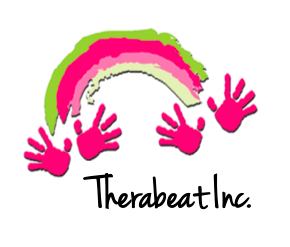Music is a powerful tool for integrating sensory systems during a therapeutic session with individuals with Autism Spectrum Disorder (ASD). Autism Spectrum Disorder, according to the National Institutes of Health, is a condition characterized by difficulties in communication, flexibility in behavior, and social interaction These sensory based behaviors impact how one responds to auditory, tactile, and visual stimuli. ASD is a spectrum, and there is no one-size-fits-all method to aid sensory processing needs. Current research concludes that an individual's sensory needs must be met before a therapist can target developmental and social-emotional goals.
The link between music and the sensory system is through the nervous system. Music therapy helps by aiding in the disruption that occurs in the organization of sensory input. This is done through the perception of music throughout the brain combined with the emotional reaction music can produce.
Music therapy aids in working with individuals with ASD and maintaining sensory needs through many different interventions. A few of these interventions consist of:
Movement to music supporting both proprioceptive and vestibular input.
Tactile Input through musical instruments and props such as scarves, rain sticks, ocean drums, bean bags, stretchy bands, etc.
Calming/ sensory music used to regulate, reduce frustration, and increase tolerance.
In addition to these interventions, many principles that set up a music therapy session for success. This enables the therapist to more effectively address the sensory needs of their clients. These principles consist of:
Creating emotional attunement through music by altering the music, voice, and arousal level
Scaffolding interactions musically by using musical, verbal, visual, or physical cues to support the needs of the client
Targeting goals through interventions the clients enjoy by altering affect in tone of voice, facial expressions, musical actions, and gestures
-Rebecca Smith, Music Therapy Intern
References:
Geretsegger, M., Holck, U., Carpente, J. A., Elefant, C., Kim, J., & Gold, C. (2015). Common Characteristics of Improvisational Approaches in Music Therapy for Children with Autism Spectrum Disorder: Developing Treatment Guidelines. Journal of Music Therapy, 52(2), 258–281. https://doi.org/10.1093/jmt/thv005
Marco, E. J., Hinkley, L. B. N., Hill, S. S., & Nagarajan, S. S. (2011). Sensory Processing in Autism: A Review of Neurophysiologic Findings: Pediatric Research, 69(5 Part 2), 48R-54R. https://doi.org/10.1203/PDR.0b013e3182130c54
Perrin, F., & Magee, W. L. (2023). Music as Sensory Stimulation and Therapeutic Intervention. In C. Schnakers & S. Laureys (Eds.), Coma and Disorders of Consciousness (pp. 99–113). Springer International Publishing. https://doi.org/10.1007/978-3-031-50563-8_6
Simhon, V., Elefant, C., & Orkibi, H. (2019). Associations between music and the sensory system: An integrative review for child therapy. The Arts in Psychotherapy, 64, 26–33. https://doi.org/10.1016/j.aip.2018.11.005

